In account-based marketing (ABM), identifying the right accounts is just the first step. Many organizations invest heavily in ABM programs but struggle to measure their impact across the full buyer journey. From early intent signals to closed-won revenue, tracking the right analytics is key to understanding which accounts are truly engaging—and which campaigns actually influence deals.
Modern ABM analytics now make it possible to connect intent with pipeline, giving marketers and sales teams the insights they need to make smarter decisions. In this post, we’ll explore how to track intent from first touch to close, and why deeper-funnel metrics are essential for accurate attribution.
Why Intent Data Is the Starting Point for Accurate ABM Attribution
Intent data reveals which accounts are actively researching topics relevant to your business. This includes signals like search activity, content downloads, website visits, and social engagement. By capturing these early signals, marketing teams can identify high-potential accounts, validate ideal customer profiles (ICPs), and prioritize efforts.
But intent data is only valuable if it connects to pipeline outcomes. When early-stage insights feed into CRM and ABM platforms, sales and marketing can act quickly, engaging accounts with personalized content and timely outreach. This alignment ensures that intent signals translate into measurable revenue impact rather than just surface-level engagement.
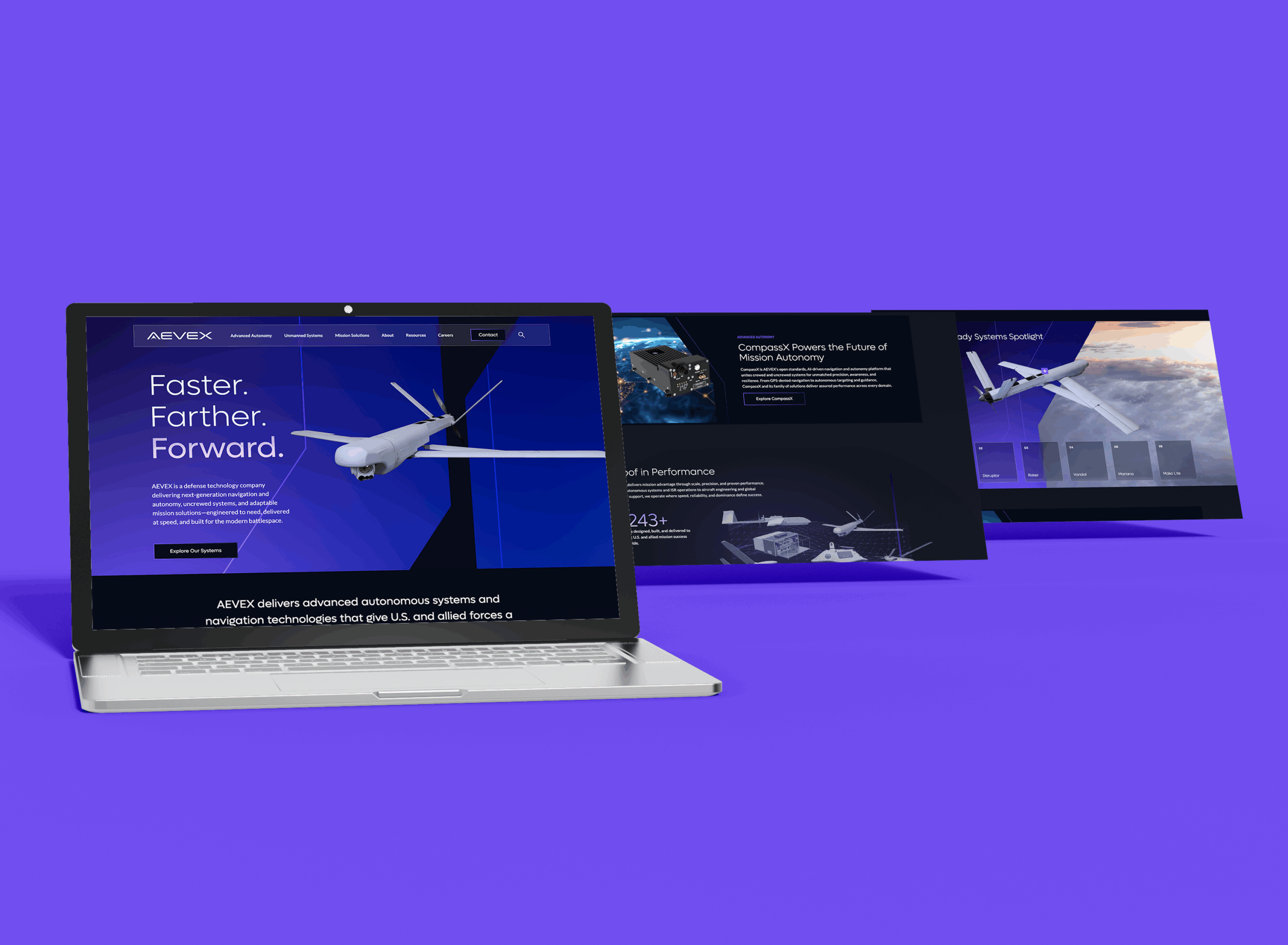
Mapping Intent Across the Full Funnel
The power of ABM analytics comes from connecting early intent with mid- and late-funnel activity. Once a target account shows intent, you can track their engagement with nurture campaigns, demos, sales meetings, and buying committee interactions.
Journey analytics tools help visualize account movement, revealing which signals correlate with progression through the funnel. Closing intent gaps requires consistent data capture, standardized engagement scoring, and collaboration between marketing and sales. When teams share a single view of high-intent behavior, outreach becomes both timely and relevant, shortening sales cycles and improving conversion rates.
The ABM Metrics That Actually Matter for Revenue Leaders
Not all ABM metrics are created equal. Rather than focusing on impressions or clicks, revenue-driven organizations track metrics tied to real outcomes. Key metrics include:
- Account engagement score: A composite measure of interactions across channels.
- Buying committee participation: How many decision-makers are actively engaged.
- Pipeline influence: Contribution of ABM campaigns to opportunities and revenue.
- Sales velocity and conversion by tier: How quickly accounts move through the funnel and where interventions are most effective.
Focusing on these metrics gives leaders a clear picture of ABM’s ROI, allowing teams to optimize campaigns and resource allocation.
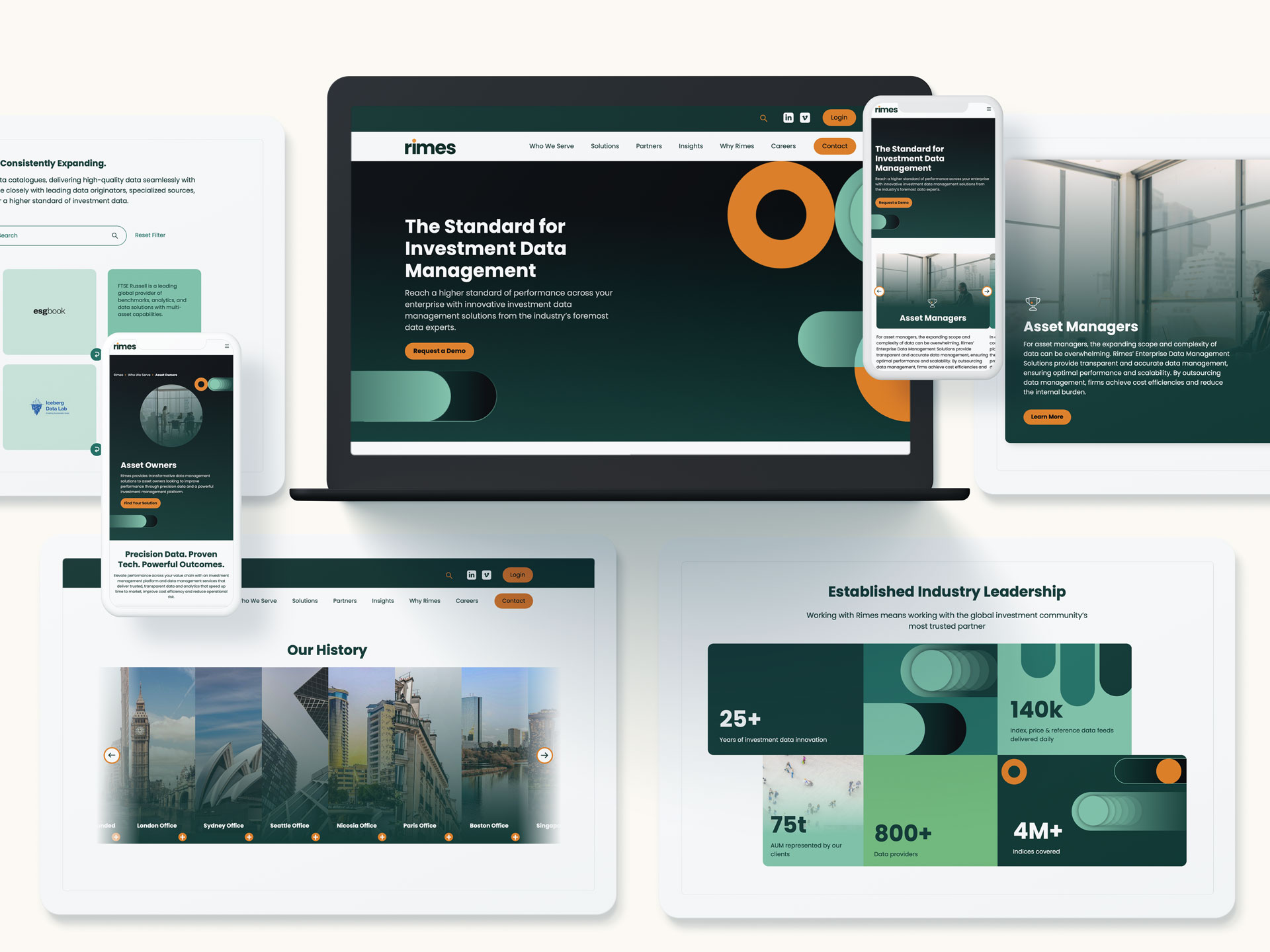
Turning Analytics Into Attribution
ABM attribution is complex due to multiple stakeholders and long sales cycles. Single-touch attribution rarely reflects reality, while multi-touch models show which plays actually move deals.
Deeper-funnel metrics reveal insights like which content accelerates early-stage deals or which channels engage the buying committee most effectively. Real-time dashboards enable continuous optimization, helping marketing teams double down on what works and pivot away from low-impact activities.
Building a Connected Tech Stack
Tracking intent from first touch to close requires a connected technology stack. Essential tools include:
- CRM platforms for account tracking and sales visibility.
- Marketing automation platforms (MAPs) to orchestrate campaigns.
- ABM platforms for account segmentation, intent scoring, and orchestration.
- Predictive analytics and intent software for early-stage insights.
Integrations between these systems allow data to flow seamlessly, giving teams unified reporting and complete visibility into the account journey. Clean, standardized data is essential for accurate measurement and actionable insights.
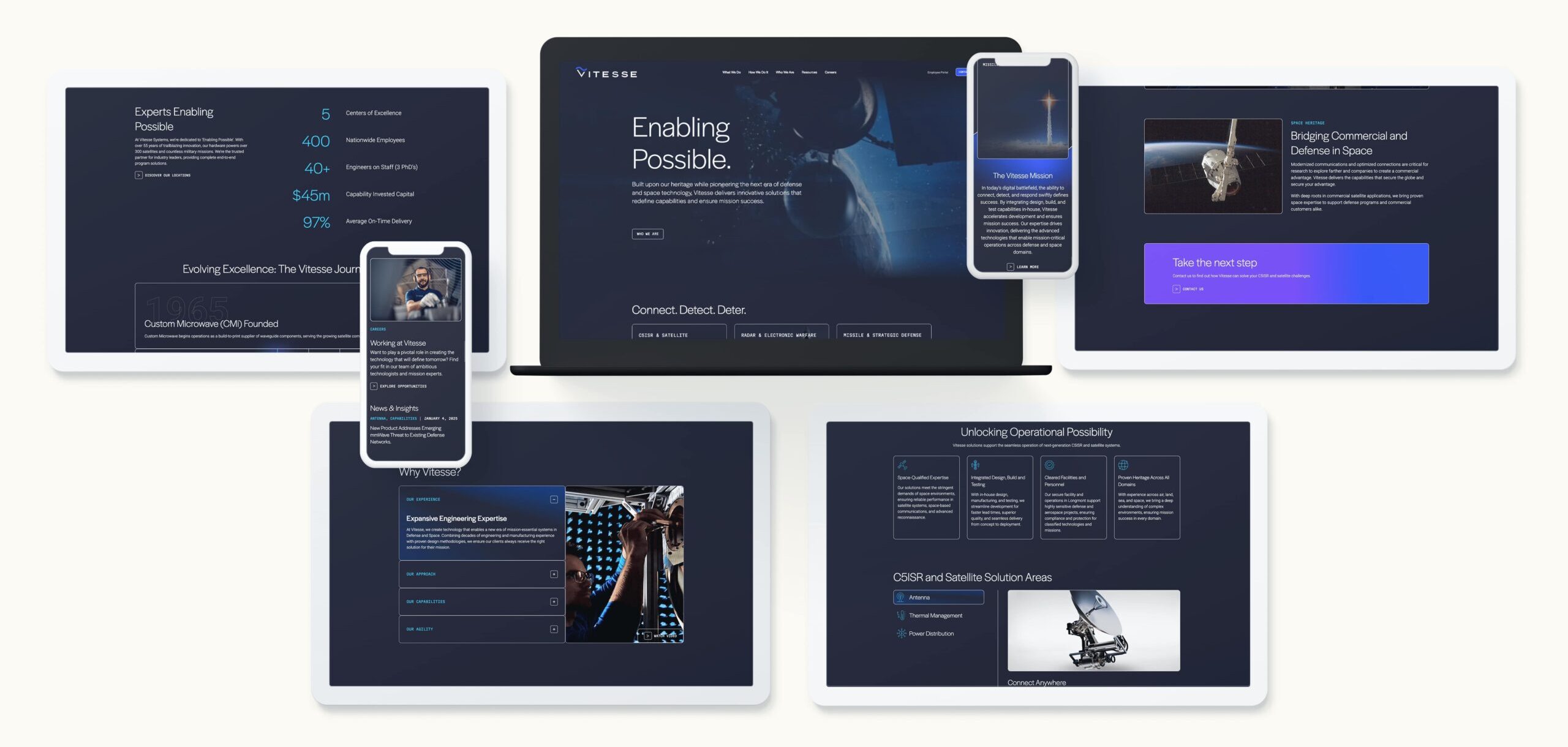
Operationalizing ABM Analytics Across Your Team
Analytics are only useful if teams act on them. Embed insights into weekly revenue meetings, account strategy sessions, and pipeline reviews. Enable sales teams with content and messaging recommendations based on intent data.
Alignment is critical: shared KPIs, dashboards, and SLAs ensure that marketing and sales are accountable for closed-won revenue, not just early-stage metrics. This coordinated approach drives consistent growth and makes ABM a measurable revenue engine.
Better ABM Analytics Lead to Smarter Growth Decisions
When intent is tracked and analyzed across the full funnel, marketers and sales teams can make smarter decisions that directly impact revenue. Connected systems, shared definitions, and revenue-first measurement help organizations identify opportunities faster, engage accounts effectively, and optimize campaigns for measurable impact.
Ready to improve your ABM analytics and drive pipeline growth? Contact Bluetext to discover how we help companies connect intent data to revenue and create full-funnel, account-based marketing strategies that work.
Generative AI is transforming content marketing. From blog posts to email campaigns, AI tools can help marketers create copy faster and more efficiently. But there’s a catch: the quality of your AI output depends almost entirely on the prompts you provide. A vague or poorly structured prompt can lead to inconsistent, off-brand content that wastes time instead of saving it.
This guide will teach you the fundamentals of prompt engineering, helping you craft effective prompts that consistently produce on-brand content, whether you’re writing social media posts, website copy, or email campaigns.
What is Prompt Engineering?
Prompt engineering is the practice of designing inputs—or prompts—for AI tools to generate precise, useful outputs. For marketers, it’s less about coding and more about clear communication: giving AI enough context and direction to produce content that aligns with your brand voice, tone, and objectives.
For example:
- Vague prompt: “Write a blog about email marketing.”
- Well-engineered prompt: “Write a 600-word blog post on email marketing for B2B SaaS companies, focusing on personalization strategies. Use a professional, approachable tone and include at least three actionable tips.”
The difference is night and day. The second prompt gives context, audience details, desired length, tone, and structure, which helps the AI generate content you can use with minimal editing.
Why marketers need prompt engineering:
- Ensures content aligns with brand voice
- Reduces time spent editing AI outputs
- Increases content consistency across channels
- Improves ROI on AI content tools
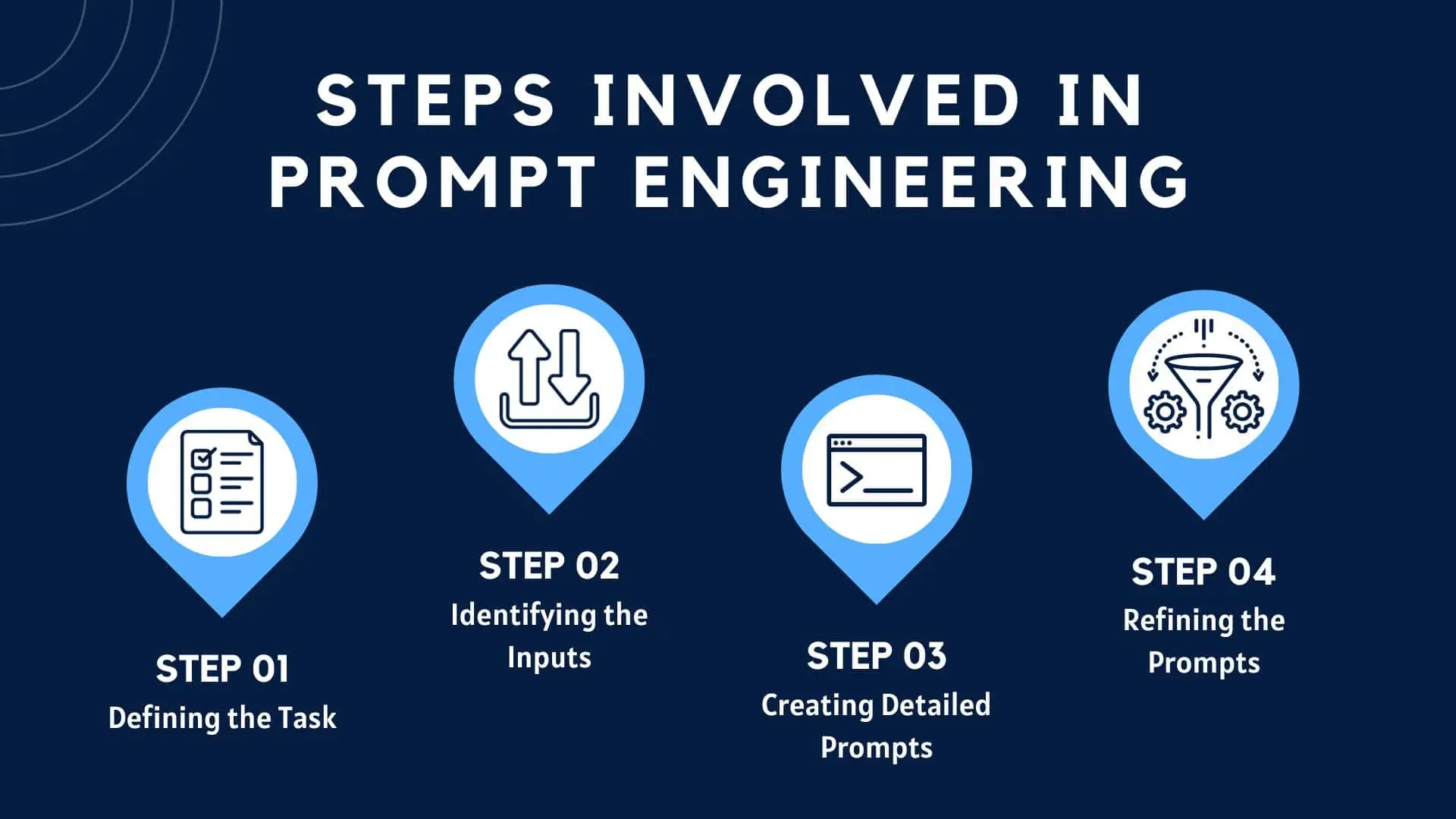
Key Principles of Effective Prompt Engineering
To get the most out of AI tools, marketers should follow these core principles:
- Clarity – Be explicit about what you want, including tone, style, audience, and format.
- Context – Provide background information or examples to guide the AI.
- Constraints – Define limits such as word count, structure, or style to keep outputs consistent.
- Iterative Refinement – Test, tweak, and improve prompts based on results.
By following these principles, you can significantly reduce wasted effort and ensure AI-generated content is aligned with your marketing goals.
Prompt Engineering Strategies for Content Marketers
Here are actionable strategies you can start using today:
1. Start With a Goal
Define the objective of your content before writing your prompt. Are you creating a blog post, a LinkedIn update, an email, or a product description? Your prompt should clearly state the intended output.
2. Audience-Centric Prompts
Include audience persona details, pain points, and preferences. For example:
“Write a LinkedIn post targeting marketing managers at mid-sized SaaS companies, highlighting the benefits of AI-powered analytics in campaign optimization.”
3. Specify Tone and Style
Your brand voice matters. Whether your tone is professional, friendly, witty, or authoritative, make it clear in your prompt to avoid generic outputs.
4. Provide Examples
Give the AI examples of successful content. For instance, link to or describe previous posts or blogs that represent the style you want.
5. Use Templates
Create reusable prompt templates for recurring content types. Examples:
- Blog posts: Include word count, section headers, key points, CTA.
- Social media: Specify character limit, hashtags, emojis, tone.
- Emails: Define subject line, body length, personalization cues.
Sample Prompt Template:
“Write a 500-word blog post for [audience] on [topic]. Include three actionable tips and a call-to-action. Use a [tone] tone and [style] formatting.”

Common Prompt Mistakes to Avoid
Even experienced marketers can make mistakes with AI prompts. Avoid these pitfalls:
- Using vague language or assuming the AI will infer context
- Overloading prompts with too many instructions
- Ignoring iterative testing and refinement
- Failing to align output with brand voice
By addressing these common errors, you’ll save time and improve the consistency of your AI-generated content.
Measuring Prompt Success
Effective prompt engineering doesn’t stop at writing. You need to measure success:
- Content alignment: Does the output match your brand voice and style?
- Engagement metrics: How well does the content perform with your audience?
- Efficiency gains: Are you spending less time editing AI outputs?
Iterate on your prompts using these metrics. Small adjustments can dramatically improve output quality over time.
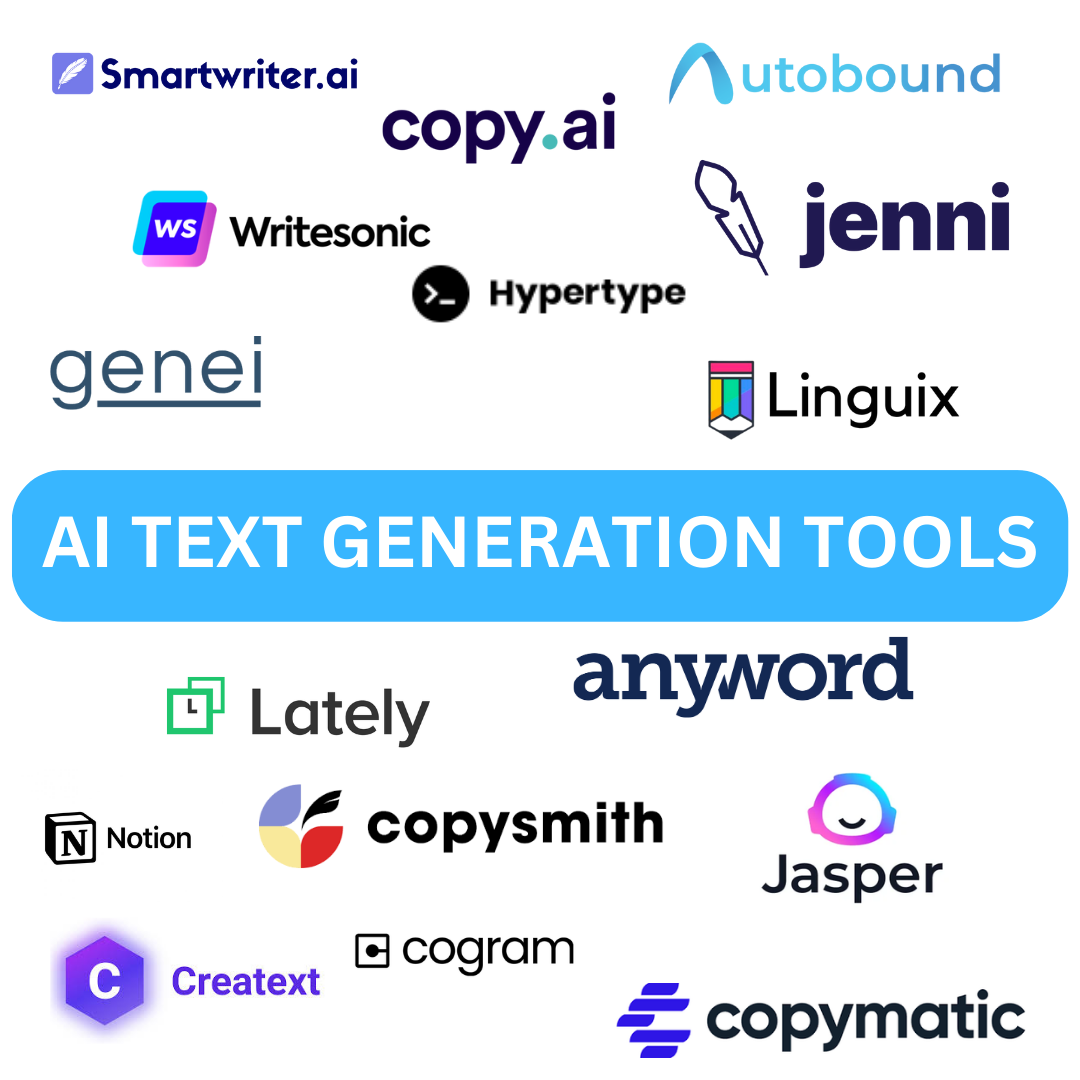
Tools and Resources
Several AI writing tools are well-suited for marketers:
- ChatGPT – Versatile tool for blogs, emails, social posts
- Jasper – AI content generation with templates and workflows
- Writesonic – Great for social media, ads, and web content
- Copy.ai – Fast generation for marketing copy and product descriptions
Learning Resources:
- Blogs and guides on AI content creation
- Online courses focused on AI writing tools
- Community forums and workshops on prompt engineering
Conclusion & Takeaways
Prompt engineering is a skill every modern marketer should master. By crafting clear, context-rich, and iterative prompts, you can consistently generate on-brand content, reduce editing time, and maximize the ROI of AI tools.
Actionable steps:
- Start small and iterate on your prompts
- Document successful prompts for repeat use
- Always measure outputs against your brand standards
Ready to supercharge your content marketing with AI? Contact Bluetext to learn how our team can help you implement AI-driven content strategies, including expert prompt engineering support.
As brands look for innovative ways to engage audiences, voice cloning technology is emerging as a game-changer. By using AI-generated voices, organizations can produce podcasts, narrations, and multilingual content at scale—without overloading executives or creative teams. This approach not only saves time and resources but also ensures a consistent brand voice across channels.
Understanding Voice Cloning Technology
What Is Voice Cloning?
Voice cloning is the process of creating a digital replica of a human voice using artificial intelligence. Unlike generic text-to-speech tools, advanced voice cloning captures the nuances of tone, pacing, and emotion, making synthetic speech sound remarkably natural.
How It Works
Voice cloning systems rely on neural networks and machine learning models trained on recordings of a person’s voice. With enough high-quality audio samples, these models generate speech that mimics the original speaker, allowing brands to produce content without requiring the person to record every line.
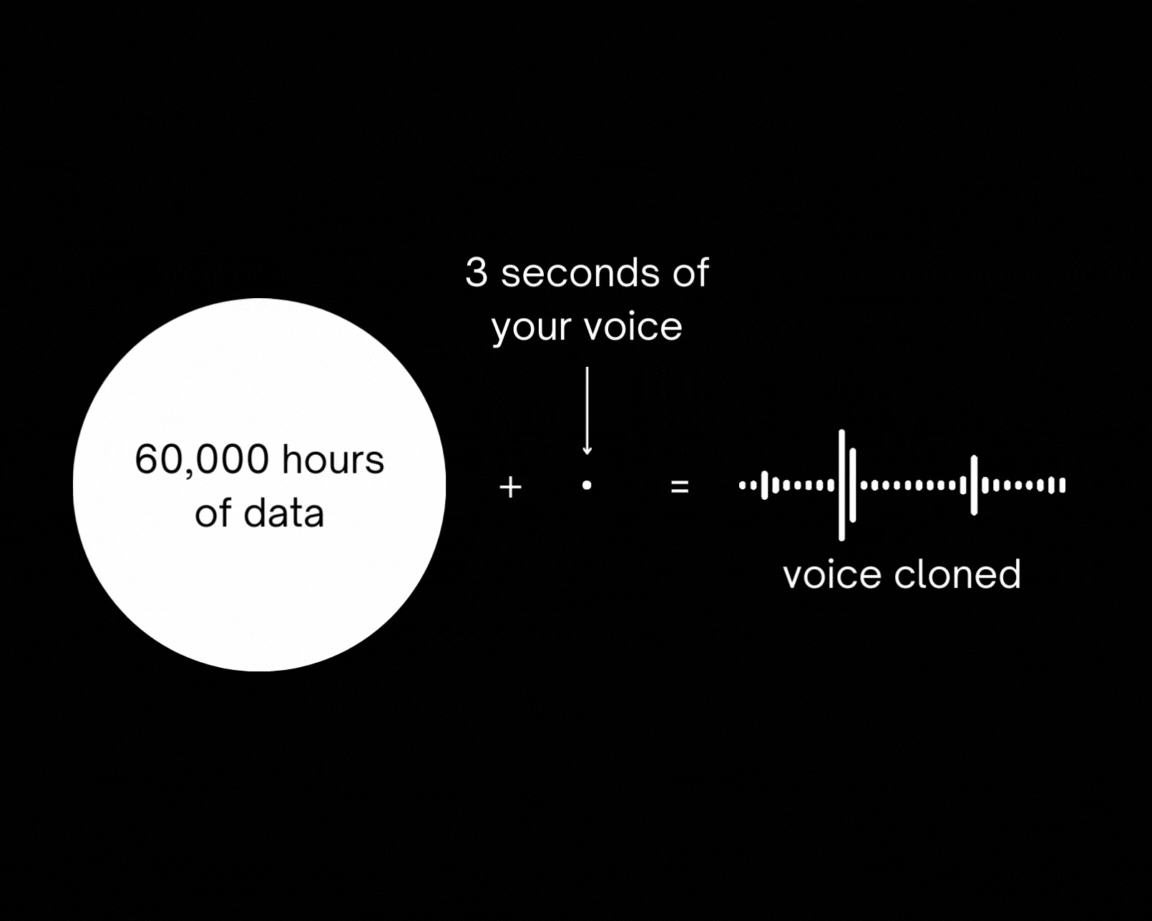
Why Brands Are Adopting Voice Cloning
Scalability for Content Production
Producing audio content can be time-intensive. Voice cloning enables brands to create multiple pieces of content quickly, from podcasts to product narrations, without overburdening executives or voice talent.
Localization Across Markets
Global brands can use synthetic voices to produce content in multiple languages while maintaining the same tone and style. This ensures a consistent brand experience for international audiences without hiring separate voice actors for each region.
Maintaining Executive Brand Presence
Voice cloning allows leadership to “be present” in content consistently, even when schedules are tight. Executives’ voices can narrate thought leadership pieces, training materials, or internal communications without requiring repeated recordings.
Practical Applications for Brands
Podcasting and Thought Leadership
AI voices streamline podcast production, letting brands maintain a regular publishing schedule and consistent tone. Thought leadership content can be scaled efficiently, keeping audiences engaged without putting extra demands on team members.
Training and E-Learning Modules
Executive narrations for internal training or learning modules can be cloned once and reused, reducing production time and ensuring consistent messaging across employees or learners.
Marketing and Customer-Facing Content
Voice cloning supports audio ads, interactive experiences, and social media campaigns, enabling brands to reach audiences in fresh, immersive ways. Personalized or dynamic audio experiences can also increase engagement and conversion rates.

Best Practices for Ethical Voice Cloning
- Obtain Consent: Always secure explicit permission from executives or voice talent before cloning their voice.
- Maintain Transparency: Let audiences know when AI-generated voices are used to preserve trust.
- Quality Control: Ensure synthetic voices sound natural and align with your brand standards.
- Avoid Misuse: Use voice cloning responsibly, avoiding misleading or deceptive content.
Implementing Voice Cloning in Your Brand Strategy
Selecting the Right Technology
Choose AI voice platforms that offer natural-sounding voices, robust customization, and security controls.
Integrating With Content Workflows
Connect voice cloning tools with podcasting platforms, e-learning systems, and marketing automation software to maximize efficiency.
Monitoring Engagement and ROI
Track audience response, completion rates, and engagement metrics to evaluate the impact of AI-driven audio content and refine your strategy over time.

The Future of AI Voice in Marketing
Voice cloning is poised to become a staple in brand content strategies. As AI continues to evolve, brands can expect more realistic, expressive synthetic voices, broader language support, and innovative ways to engage customers. Ethical and thoughtful adoption will be key to leveraging this technology effectively.
Partnering for Smart Audio Strategy
Voice cloning opens a new frontier for scalable, engaging, and executive-friendly content. Bluetext helps brands harness AI-powered audio solutions to deliver podcasts, training, marketing campaigns, and localized content—all while maintaining authenticity and brand consistency.
Ready to amplify your brand’s voice at scale?
Partner with Bluetext to explore AI-driven voice cloning for podcasting, localization, and executive-friendly audio content. Contact us today.
The way people search for information is changing — and fast. For years, businesses have centered their digital strategies around search engines like Google and Bing. Ranking well in search meant visibility, traffic, and leads. But the rise of answer engines — tools like ChatGPT, Gemini, Claude, and Perplexity — is rewriting the rules.
Unlike search engines, which serve up links, answer engines provide direct, conversational responses. They don’t just guide users to content — they become the content. For businesses, this shift creates both a challenge and an opportunity: traditional SEO isn’t enough anymore. To remain visible, trusted, and competitive, brands must optimize for both search engines and answer engines as distinct marketing channels.
What Are Search Engines and Answer Engines?
Search Engines Defined
Search engines like Google, Bing, and Yahoo have long been the backbone of digital discovery. Their core function is straightforward: crawl, index, and rank websites based on relevance and authority. When users enter a query, search engines return a list of links to external sources.
This model fuels visibility, click-throughs, and traffic. Businesses optimize with SEO strategies like keyword targeting, backlink building, and content depth to appear higher in search engine results pages (SERPs).
Answer Engines Defined
Answer engines, by contrast, work differently. Tools like ChatGPT, Gemini, Claude, and Perplexity are powered by large language models (LLMs) trained to generate and synthesize information. Instead of returning a list of links, they deliver a direct, conversational answer.
When a user asks, “What’s the best CRM for mid-sized businesses?”, Google might provide a page of review sites and vendor pages. ChatGPT, on the other hand, will deliver a summarized recommendation, drawing from multiple sources — often without requiring the user to click elsewhere.

How Consumers Use Them Differently
Search Engines = Discovery and Comparison
Search remains the go-to tool for discovery. Consumers use it to compare options, read reviews, and explore multiple websites before making a decision. For example:
- Query: “Best CRM software 2025”
- User behavior: Scan a top 10 list, visit vendor sites, and weigh features.
Search thrives when users want breadth, depth, and choice.
Answer Engines = Direct and Conversational
Answer engines are where users go when they want clarity and speed. Instead of digging through multiple pages, they can ask a question and receive a concise, authoritative response.
- Query: “What’s the best CRM for mid-sized businesses?”
- User behavior: Accepts a synthesized answer and may only follow up on one or two suggested options.
Implications for User Trust & Behavior
- In search, users verify information across multiple sources.
- In answer engines, users often trust the first, most authoritative-sounding response.
This shift in user behavior underscores why businesses can’t afford to ignore answer engines. If your brand isn’t represented in AI-generated answers, you risk invisibility in a channel that’s rapidly becoming mainstream.
What This Means for Marketers
Limitations of SEO-Only Strategies
SEO remains critical, but a #1 Google ranking doesn’t guarantee visibility in ChatGPT or Gemini. Answer engines don’t simply mirror SERPs — they blend multiple data sources, including structured content, FAQs, authoritative sites, and brand mentions across the web.
The Rise of Answer Engine Optimization (AEO)
This is where Answer Engine Optimization (AEO) comes in. Unlike SEO, which focuses on signals like backlinks and keywords, AEO is about making content clear, direct, authoritative, and structured so it can be easily understood and cited by AI models.
Businesses that fail to adapt may find themselves out of the conversation — literally.
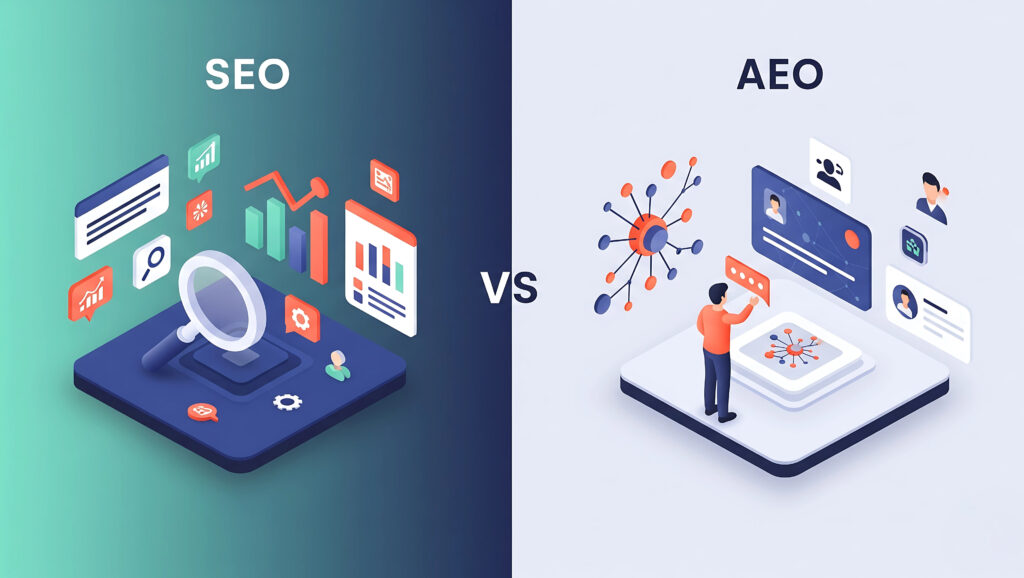
Strategies to Optimize Across Channels
Optimizing for Search Engines (SEO)
Search engine optimization remains foundational. Key tactics include:
- Technical SEO: Ensure sites are fast, mobile-friendly, and indexable.
- Keyword Strategy: Target relevant, high-intent keywords that match user queries.
- Content Depth: Publish long-form, authoritative content that demonstrates expertise.
- Link Building: Strengthen domain authority through trusted backlinks.
These tactics ensure continued visibility in Google and Bing, where billions of searches still happen daily.
Optimizing for Answer Engines (AEO)
Answer engines require a different approach. To increase the likelihood your brand appears in AI-generated answers:
- FAQ-Driven Content: Write content in Q&A form that matches how users phrase questions.
- Structured Data & Schema Markup: Use metadata to help AI models understand and categorize your content.
- Thought Leadership: Publish authoritative insights and contribute to reputable publications.
- Conversational Style: Write in natural, direct language — the way people actually ask questions.
These tactics help answer engines recognize your content as reliable and relevant, increasing your chances of being surfaced.
Why Businesses Need Both
Treating SEO and AEO as complementary channels is critical.
- Search drives discovery traffic and brand awareness.
- Answer engines shape perception and recommendations.
Together, they form a holistic digital marketing ecosystem where businesses can both attract new prospects and influence their decision-making at critical moments.
The Future of Digital Marketing Channels
Search and answer engines are not mutually exclusive — they will coexist and converge. Search engines are already incorporating AI-powered overviews, and answer engines increasingly cite traditional search results.
Looking ahead:
- AI will favor authoritative brands. Companies with consistent, credible digital footprints will surface more often in answers.
- Omnichannel strategies will win. Businesses must ensure consistency across their websites, content, and external mentions.
- First movers will gain advantage. Companies that optimize early for both SEO and AEO will establish authority before competitors catch up.
For marketers, the message is clear: don’t wait for the future to arrive — build for it now.
Bluetext’s Perspective
At Bluetext, we help brands navigate this shift. Our approach combines the proven fundamentals of SEO with forward-looking AEO strategies, ensuring businesses stay visible across all digital channels. From technical optimization to thought leadership campaigns, we position clients to succeed in both search engines and answer engines — today and tomorrow.
Time to Rethink Your Digital Strategy
The evolution from search to answers is reshaping how people find, trust, and engage with brands. Businesses that adapt their strategies now will lead the conversation in the years ahead.
Is your marketing strategy built for both search engines and answer engines? Contact Bluetext to learn how we can help your brand optimize across channels and stay ahead of the curve.
For decades, search engine optimization (SEO) has been the cornerstone of digital visibility. Brands climbed the SERP ladder by fine-tuning keywords, metadata, backlinks, and technical performance. But as we enter a new era of information retrieval, one thing is clear: search is no longer just about search engines—it’s about AI.
From ChatGPT to Gemini, Claude to Perplexity, Large Language Models (LLMs) now answer millions of queries daily. Users aren’t clicking links—they’re receiving summaries. For marketers and content creators, that’s both a threat and an opportunity. The new challenge? Becoming the source behind the AI answer.
Enter LLMO and AEO—two game-changing approaches to digital strategy that help ensure your content surfaces in this AI-first discovery landscape.
What Is LLMO? Understanding Large Language Model Optimization
LLMO stands for Large Language Model Optimization—the practice of crafting content that LLMs can read, understand, trust, and surface in generated outputs. Unlike traditional SEO, which optimizes for web crawlers like Googlebot, LLMO focuses on the way AI models digest and regenerate language.
LLMs don’t operate like search engines. They don’t “rank” content by authority alone. Instead, they:
- Interpret semantic meaning
- Generate answers based on contextual reliability
- Use natural language understanding to surface the most helpful response
- Rely on internal training data and real-time search tools to cite sources
If your content isn’t readable, factual, and structured in a way that an LLM can parse, your brand may never make it into the answer—even if you’re ranked #1 on Google.
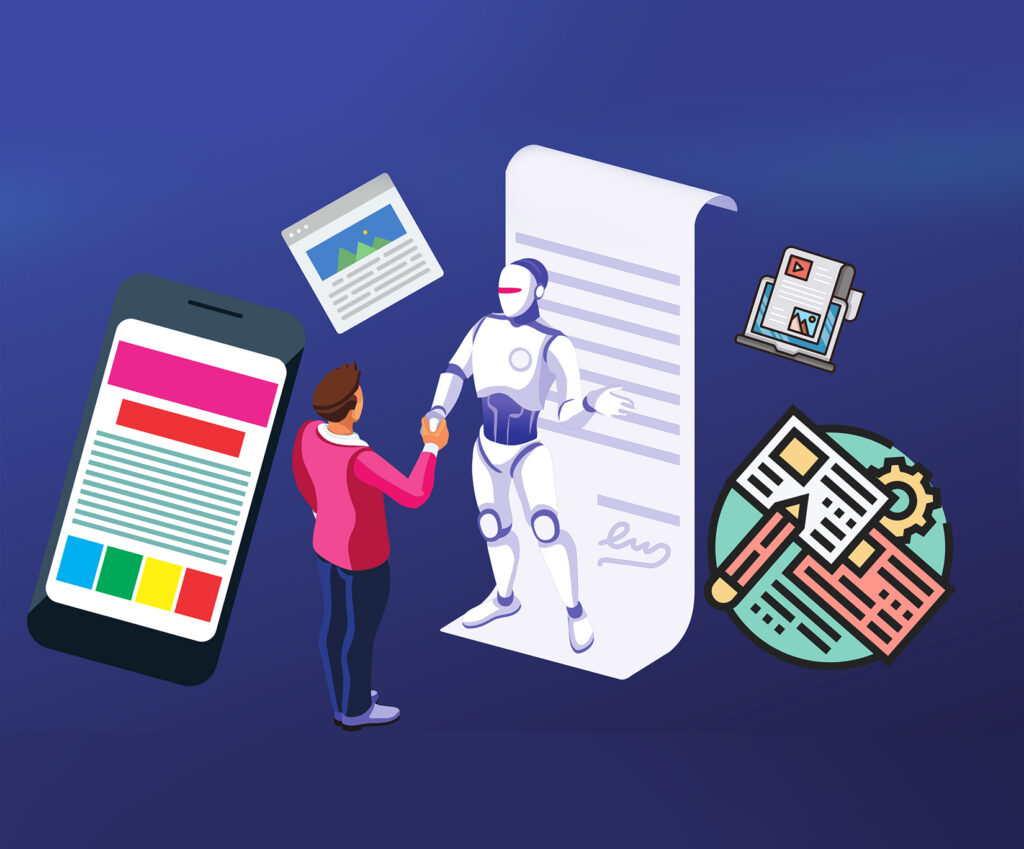
What Is AEO? Introducing Generative Engine Optimization
Answer Engine Optimization (AEO) is the practice of optimizing for AI-based search engines and conversational platforms. Think of it as the evolution of SEO, reimagined for tools like:
- Perplexity (which cites sources in responses)
- You.com
- ChatGPT with browsing
- Google SGE (Search Generative Experience)
Where SEO is about being ranked, AEO is about being referenced.
These AI engines often quote, link to, or paraphrase content. AEO helps ensure your brand’s content is:
- Discoverable by AI crawlers and retrievers
- Structured for AI citation and reference
- Trusted as a reliable source by generative algorithms
Together, LLMO and AEO form a dual-layered strategy for the future of digital visibility.
Why LLMO and AEO Matter More Than Ever
The Decline of the Click
We’ve entered the zero-click era, where generative answers mean users don’t need to click through to your website. This has profound implications:
- Organic CTRs (click-through rates) are falling
- Even top-ranking pages see fewer visits
- Users trust AI-summarized answers more than traditional snippets
The Rise of AI-Mediated Discovery
Increasingly, business leaders, researchers, and consumers are turning to LLMs for fast, conversational insight. For B2B brands especially, being included in the answer is the new mark of authority.
Visibility ≠ Ranking
It’s possible to rank #1 on Google and be ignored by generative tools—or to rank nowhere and still be quoted in ChatGPT. AEO is how you bridge that gap.
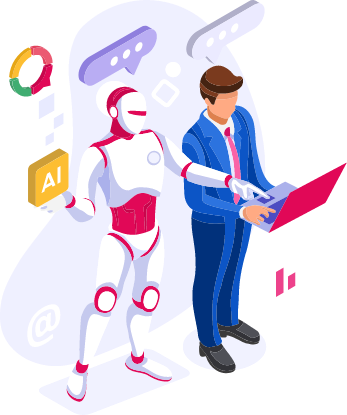
How LLMs Consume and Cite Content
To optimize for LLMs, we need to understand how they work:
- LLMs prefer clear, authoritative content with natural language flow
- They extract structured insights—especially from lists, FAQs, and headers
- They trust brands with high topical authority (frequent mentions, consistency, backlinking)
In short, LLMs reward what humans also value: clarity, expertise, and relevance. But unlike humans, they need structure and signals to understand your content’s reliability.
Core Tactics for LLMO and AEO Success
1. Create Conversational, Contextual Content
LLMs are trained on how people speak. That means:
- Write naturally, not robotically
- Use FAQs, how-tos, and question-answer formats
- Answer specific queries in plain, clear language
- Incorporate synonyms, related phrases, and user intent
Example: Instead of “Answer Engine Optimization for B2B SEO,” try “How can B2B marketers optimize their content to appear in AI-generated answers?”
2. Focus on Semantic & Long-Tail Keywords
Traditional keyword stuffing doesn’t work in LLM land. Instead:
- Emphasize search intent over search volume
- Use long-tail queries that mimic how people speak to AI
- Include variations of core terms to build contextual weight
AEO-optimized keywords:
“Cited by ChatGPT,” “content that appears in Perplexity AI,” “optimize for AI search results,” “LLMO strategy for marketing teams.”
3. Structure Content for Machine Interpretation
Just like search engines love schema, so do LLMs. Your formatting matters:
- Use clear H1, H2, H3 structure
- Break up walls of text with bullets and numbered lists
- Use tables, charts, and bolded terms for scannability
- Add schema markup (FAQPage, HowTo, Article) to signal intent
Tools like Perplexity often favor clearly segmented guides over narrative-only blog posts.
4. Build Depth, Authority, and Relevance
LLMs reference content that feels complete and authoritative. That means:
- Go deep—1,500+ words often outperform thin content
- Back up points with data, quotes, and examples
- Demonstrate topical consistency across your site (e.g., multiple blogs on LLMO, AEO, AI content strategy)
Your brand needs to sound like and act like an expert.
5. Optimize Metadata & Internal Links
AI tools ingest metadata. Be intentional:
- Write natural-language meta titles and descriptions
- Use internal links to cluster related content and establish authority on a topic
- Include descriptive anchor text (e.g., “see our guide to AI-ready content”)
This not only helps traditional SEO—it gives AI models contextual signals that elevate your visibility.
6. Citations, Mentions & External Signals
Generative models often cite based on frequency and trust. You can increase your chances by:
- Earning backlinks from high-authority sites
- Using original statistics or frameworks worth referencing
- Publishing on reputable third-party platforms (e.g., Medium, Substack, LinkedIn)
Pro Tip: AI models love linking to well-structured thought leadership—especially if it includes unique data, expert commentary, or industry frameworks.
7. Monitor Your AI Visibility
You can’t improve what you don’t measure. Use tools to:
- Search your brand in ChatGPT, Gemini, and Perplexity
- Look for citations, summaries, or paraphrased answers
- Track whether your domain is being pulled in AI overviews
As this space evolves, visibility in generative search may become a key digital marketing KPI.
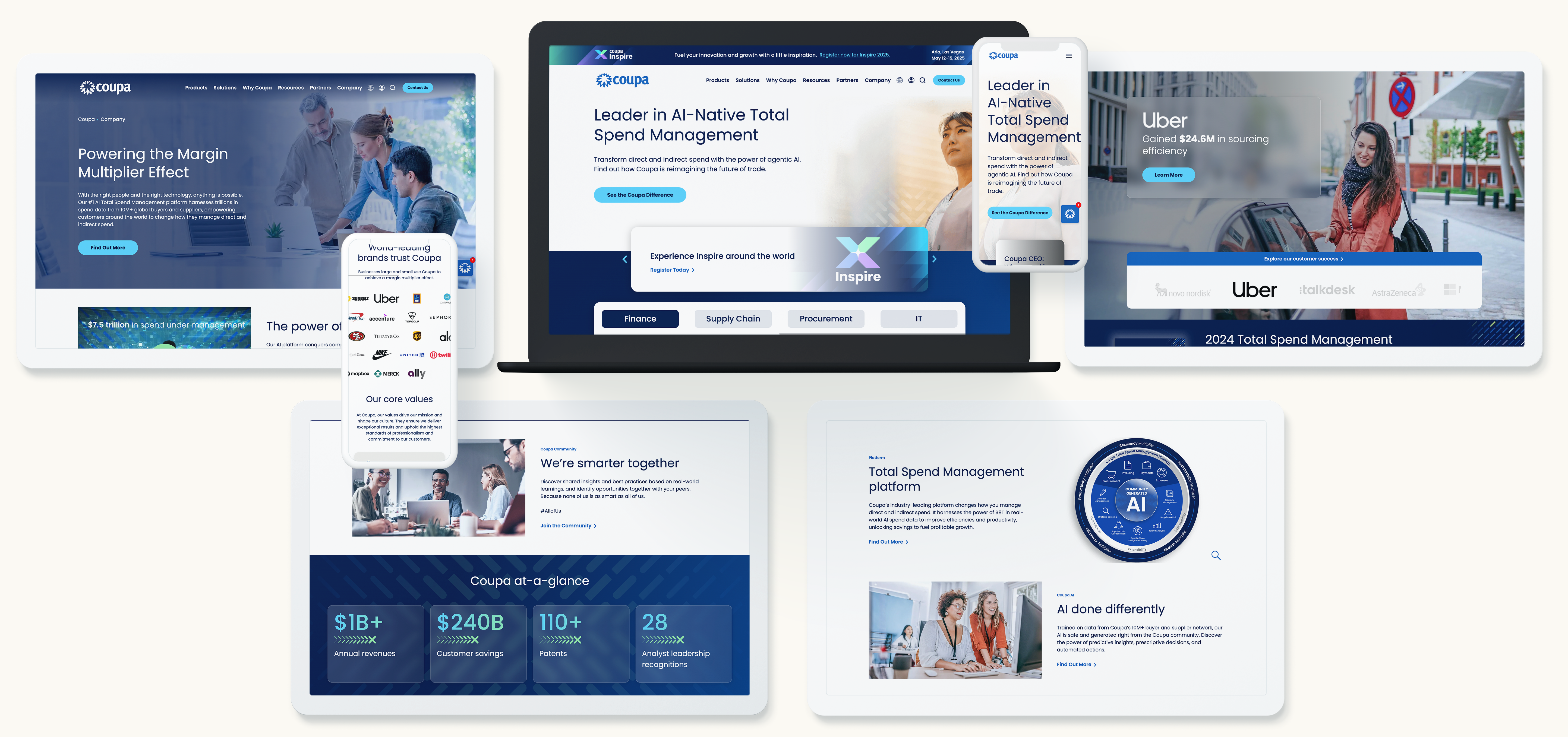
What LLMO + AEO Mean for Marketers
SEO isn’t dead—but it’s evolving. Marketing teams who embrace LLMO and AEO will:
- Increase their AI-era visibility
- Reduce dependency on traditional SERPs
- Future-proof their content investments
- Position their brand as an authoritative, AI-trusted resource
In short, it’s not enough to be seen. You need to be cited. Trusted. Used.
Let’s Talk About Your AI Visibility
At Bluetext, we help brands thrive in the age of AI search. From content strategy to metadata, structure, and authority-building, we craft marketing that performs across platforms—including the ones without a click-through.
Reach out today to ensure your content gets seen, cited, and surfaced—wherever your audiences are searching.
The average enterprise uses over 90 marketing technology tools across departments—and that number is still climbing. From campaign automation and CRMs to chatbots and data enrichment tools, it’s easy to see how even the most sophisticated marketing teams end up with tech stacks that are bloated, redundant, and wildly underutilized.
This growing complexity comes at a cost: disjointed customer experiences, wasted budget, operational inefficiency, and poor alignment with revenue goals.
That’s where a MarTech stack audit comes in.
A strategic audit doesn’t just clean house—it provides clarity. It helps marketing leaders identify which tools to keep, which to cut, and which can be combined to improve performance and simplify operations. If your stack feels more like a junk drawer than a power tool, it’s time to reassess.
The Risks of a Bloated MarTech Stack
Too much tech isn’t just inefficient—it’s actively harmful to your business outcomes. Here’s why:
- Wasted Budget: You’re likely paying for tools that are barely used—or completely unused.
- Data Silos: With multiple platforms collecting customer data, it’s harder to get a unified view of performance or behavior.
- Inefficient Workflows: Teams waste time toggling between platforms, managing duplicate processes, or dealing with misaligned automations.
- Frustrated Teams: When the stack doesn’t work together, Marketing Ops teams carry the burden of patching it all together manually.
If your MarTech stack feels like more of a burden than a benefit, that’s a clear signal it’s time for a comprehensive audit.
What to Keep: Tools That Support Revenue and Scalability
The goal isn’t to slash and burn—it’s to prioritize the platforms that deliver measurable value. When evaluating what to keep, focus on tools that:
- Drive ROI: Are you clearly seeing business impact from this tool (e.g., lead quality, conversion rate, revenue attribution)?
- Are Widely Adopted: If your team isn’t using the tool consistently or effectively, it’s not worth keeping.
- Integrate Well: Is the tool plugged into your data layer, CRM, or automation workflows?
Essential tools that often make the cut include:
- Customer Relationship Management (CRM) platforms like Salesforce or HubSpot
- Marketing Automation Tools such as Marketo, Pardot, or ActiveCampaign
- Analytics Platforms for performance tracking (Google Analytics, Looker, Tableau)
- Content Management Systems (CMS) with flexibility and personalization features
If the tool clearly supports your funnel—from awareness to revenue—and plays nicely with the rest of your stack, it’s a keeper.
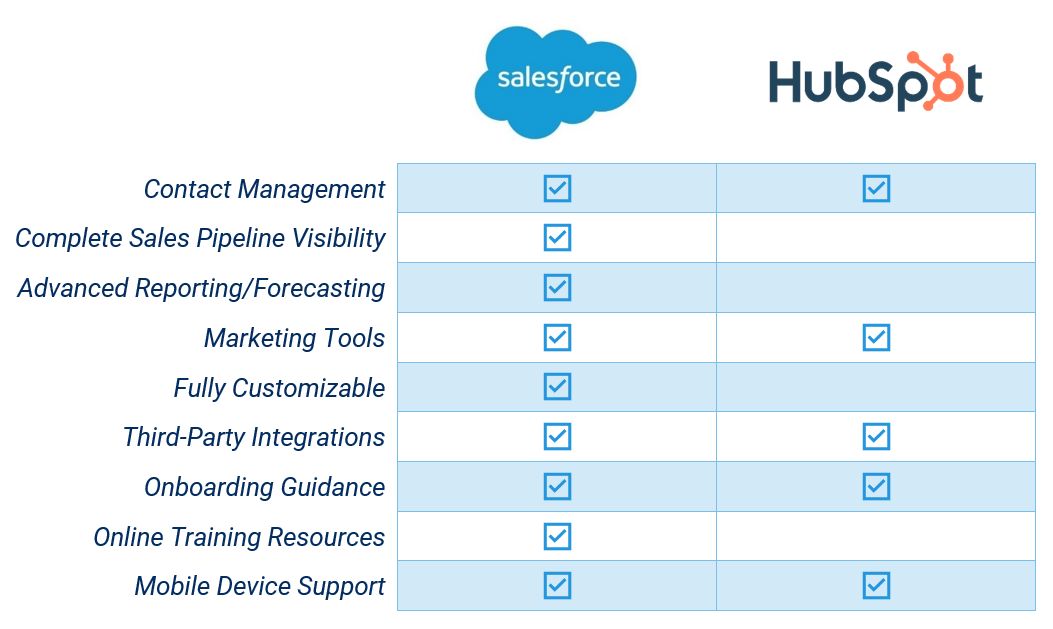
What to Kill: Tools That Drain Resources or Create Friction
Not every tool deserves a place in your stack. Some should be sunset to reduce complexity and cost. Red flags include:
- Redundancy: Are there multiple platforms performing the same function (e.g., two different email marketing platforms or survey tools)?
- Low Usage: Are licenses going unused or is the platform too complex for team adoption?
- Lack of Integration: Tools that operate in silos or require excessive manual workarounds aren’t worth the effort.
- Unclear ROI: If you can’t measure the value, it’s likely not driving results.
Killing tools can be a morale win too—your team will thank you for removing tech debt that slows down progress.
What to Combine: Tools That Overlap in Function
One of the most powerful outcomes of a MarTech audit is consolidation. Many modern platforms now offer multi-functional capabilities that replace the need for multiple point solutions.
Consider:
- All-in-One Marketing Platforms (like HubSpot or Adobe Experience Cloud) that combine CRM, email, automation, and content.
- Customer Data Platforms (CDPs) that centralize user behavior and enable personalization across tools.
- Integrated ABM Suites that unify ad targeting, content personalization, and sales insights.
The goal is to map your workflows and see where platform consolidation can improve speed, reduce costs, and minimize friction between teams.
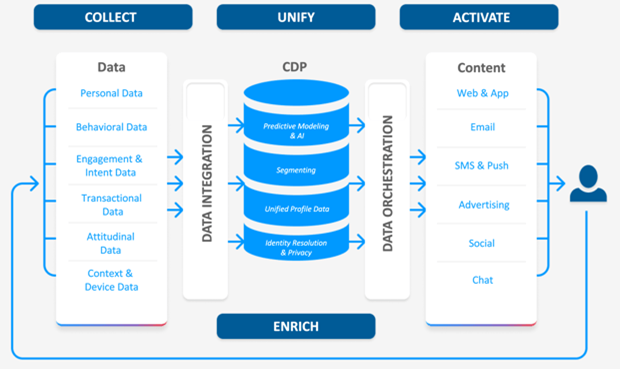
Best Practices for a Successful MarTech Stack Audit
A thorough audit requires more than just a list of logins. To do it right:
- Interview Stakeholders – Talk to your marketing, sales, ops, and analytics teams. Who’s using what? What’s actually working?
- Audit Usage and Cost – Review licensing data and usage reports. How often is each tool being used, and by whom?
- Map Integrations – Visualize how your tools connect. Where are the gaps or workarounds?
- Score Each Tool – Create an “impact vs. effort” matrix to weigh business value against maintenance cost.
- Align With Strategy – Don’t just audit for efficiency—audit for alignment. Tools should directly support your current and future marketing goals.
This process doesn’t just declutter—it sets the foundation for a smarter, more integrated marketing engine.
How to Future-Proof Your Stack Post-Audit
After your audit, don’t fall back into old habits. Build in long-term governance by:
- Creating Documentation – Ensure tool purpose, owners, and integrations are clearly documented.
- Assigning Ownership – Every tool should have a designated owner responsible for training, performance, and license management.
- Scheduling Regular Re-Audits – A quarterly or annual review helps keep your stack lean and aligned with evolving goals.
- Involving Revenue Teams – Tech decisions should never be made in a marketing silo. Ensure cross-functional alignment with sales, RevOps, and finance.
The best MarTech stacks are intentional, integrated, and iterative—not accidental patchworks of vendor hype.
Looking to Streamline Your Stack Without Sacrificing Strategy?
Bluetext helps marketing leaders cut through the noise and reclaim control of their tech stack. Our MarTech stack audits are designed to uncover hidden inefficiencies, align your tools with revenue goals, and lay the foundation for scalable, data-driven marketing operations.
Contact us to schedule your audit and future-proof your stack.
The generative AI revolution is well underway—and marketers are on the front lines. Since the introduction of GPT-powered tools like ChatGPT, marketers have rapidly integrated AI into everything from content creation and ideation to campaign execution and analytics.
But as adoption accelerates, a bigger question emerges: Are we using it well?
The opportunity is enormous—but so are the risks. Here’s what’s working today, where to tread carefully, and how to build a future-ready marketing stack in the age of GPT.
What GPT Is Changing About Marketing
At its core, GPT technology (short for Generative Pre-trained Transformer) allows marketers to generate human-like content at scale. This has unlocked new possibilities in:
- Content velocity – Faster creation of blogs, product descriptions, emails, and ad copy
- Personalization – Tailored messaging across segments and personas
- Ideation and brainstorming – Campaign themes, subject lines, even visual prompts
- Customer service and chat – AI-powered agents handling FAQs and low-complexity requests
- SEO and keyword strategy – Smart suggestions based on semantic patterns
It’s no longer a question of whether to use GPT—it’s a question of how to use it responsibly and strategically.

What’s Working Right Now
For many marketers, GPT is becoming a reliable sidekick. Use cases that are delivering real value today include:
- First-draft generation: Letting AI handle the heavy lift of a blank page—for blogs, emails, or social posts—so teams can focus on refinement and brand alignment.
- Summarization and transcription: Turning long-form webinars, internal briefings, or interviews into summaries, takeaways, and content assets.
- Creative brainstorming: Rapidly generating headline variations, campaign taglines, or concept ideas during early planning stages.
- Repetitive content tasks: Writing hundreds of meta descriptions or programmatically varying CTAs for different segments.
- Localized or segmented copy: Drafting region- or audience-specific variations of global campaigns faster than human teams could keep up.
What’s Risky or Overhyped
Despite the hype, GPT isn’t a plug-and-play replacement for marketers. Some areas require caution:
- Factual accuracy: GPT models don’t “know” things—they generate based on patterns. That leads to hallucinations and confidently wrong outputs, especially on niche or time-sensitive topics.
- Brand voice dilution: Without human oversight, GPT can produce copy that feels generic, off-brand, or even contradictory to your tone.
- Ethical and legal gray areas: Questions of disclosure (who wrote this?), authorship, and copyright are still evolving.
- SEO traps: Search engines are growing wary of AI-generated content that lacks originality or value, and duplicate content penalties may apply.
- Compliance and data sensitivity: Sensitive industries (healthcare, finance, government) must be vigilant about what information enters or exits AI platforms.
Marketers who treat GPT like an autopilot risk reputational and operational setbacks. It’s a tool, not a shortcut.
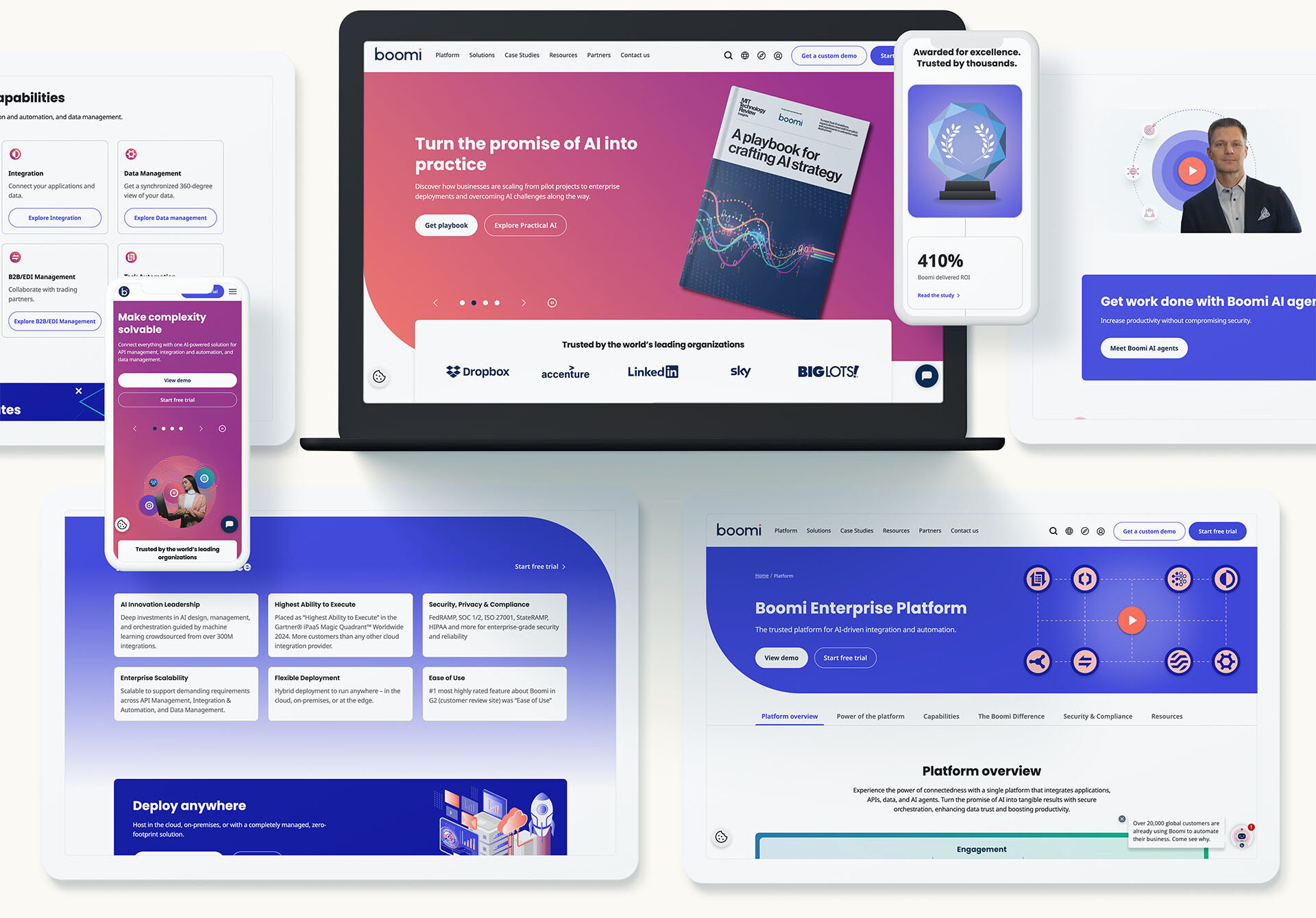
Building a Responsible AI Marketing Stack
To harness GPT effectively, organizations must adopt it deliberately, not reactively. That means establishing the right systems, standards, and safeguards.
1. Human-in-the-loop workflows
Every AI-generated asset should be reviewed, edited, and signed off by a human—especially in regulated or high-stakes environments.
2. AI content governance
Create prompt libraries, tone-of-voice rules, and QA checklists to ensure outputs meet brand and quality standards.
3. Secure tool selection
Favor GPT-powered platforms that offer enterprise-level data privacy, security compliance, and model transparency.
4. Defined use cases
Clearly outline where AI should and should not be used—such as ideation vs. thought leadership, internal drafts vs. public statements.
5. Team training
Equip marketers with prompt-writing best practices and guidance for effectively integrating AI into their workflows.
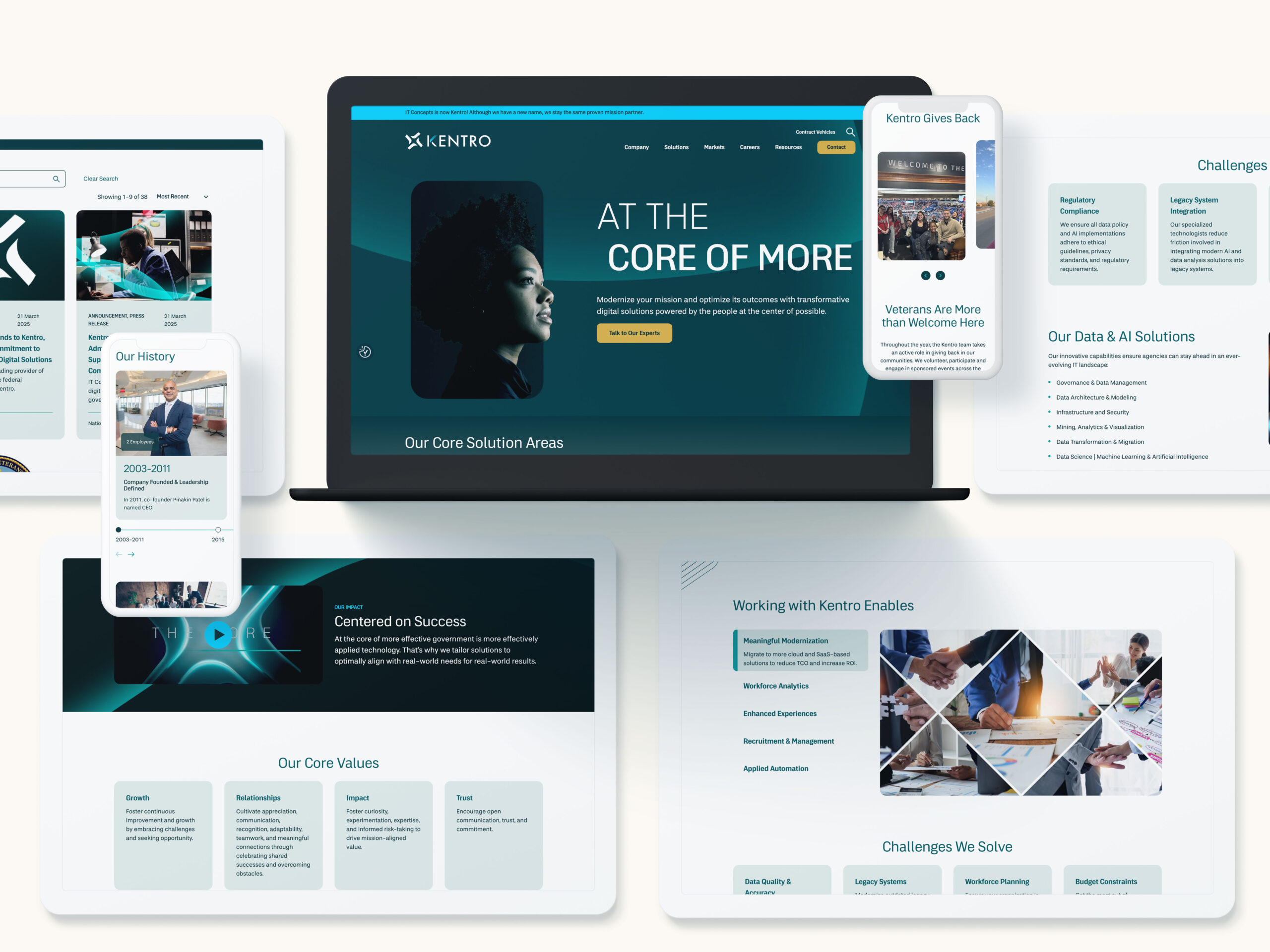
What’s Next: The Future of AI in Marketing
GPT is only the beginning. What’s coming next will expand what marketing teams can do:
- Real-time content adaptation: AI-generated content that evolves live based on user behavior, location, or engagement level.
- Multimodal experiences: Combined text, image, and video generation to streamline asset creation across channels.
- Deeper CRM integration: AI powering more personalized nurture flows and content recommendations within marketing automation platforms.
- Strategic co-pilots: AI tools that help marketers analyze performance data, suggest optimizations, and even A/B test content on the fly.
In short: GPT will go from content creator to campaign collaborator.
Ready to Build an AI-Enhanced Marketing Machine?
Bluetext helps brands responsibly scale generative AI across their marketing ecosystem—bringing speed and creativity without sacrificing strategy, quality, or control. Whether you’re building GPT into your content engine, brand voice, or marketing automation stack, we’ll help you do it right.
Contact us to develop an AI roadmap that enhances your brand, streamlines your campaigns, and sets you up for the next frontier.
The digital marketing world is preparing for a major shift: third-party cookies are on their way out. While the writing has been on the wall for some time—thanks to growing privacy concerns, regulatory pressure, and browser-level changes—the final countdown is now in motion. For B2B marketers, this change isn’t just a technical update; it’s a signal to rethink how we connect with audiences, measure success, and build meaningful digital campaigns in a privacy-first landscape.
So what does a cookieless future really mean for B2B marketing teams? And how should companies adapt?
Why the Cookie Is Crumbling
Third-party cookies have long been the backbone of many digital marketing strategies. They’ve enabled advertisers to track user behavior across sites, build robust audience profiles, serve retargeting ads, and measure multi-touch attribution.
But between data privacy regulations (like GDPR and CCPA), increased consumer scrutiny, and decisions by major players (Google, Apple, Mozilla) to block or phase out third-party cookies, marketers can no longer depend on these trackers to deliver precision targeting.
Unlike in B2C, where massive datasets and behavioral signals are more readily available, B2B marketers often work with smaller audiences, longer buying cycles, and more complex decision-making processes. The loss of third-party cookies only heightens the need for thoughtful, compliant, and relationship-based approaches.

What’s at Stake for B2B Marketing Teams
In a post-cookie environment, several key capabilities are at risk:
- Audience targeting precision – Building lookalike or intent-based audiences becomes more difficult without access to third-party behavioral signals.
- Retargeting – Following up with anonymous site visitors through programmatic channels is less reliable or even impossible.
- Attribution tracking – Multi-channel attribution models may break down without the ability to track users across sessions and domains.
- Lead nurturing automation – Third-party data often feeds into segmentation logic for account-based and intent-driven campaigns.
This shift forces B2B marketers to re-examine how data is collected, stored, and activated—and it puts renewed emphasis on first-party data, consent, and creative execution.
Privacy-First Alternatives Built for the Future
The end of third-party cookies doesn’t mean the end of personalization or targeting—it simply requires a smarter, more ethical approach to doing so. Here’s where B2B teams should focus their attention:
1. First-Party Data Strategy
First-party data—information your audience shares directly with you—is now your most valuable asset. This includes:
- Website interactions
- CRM and sales data
- Email engagement
- Event participation
- Content downloads or form fills
Building robust lead capture mechanisms, refining gated content strategy, and aligning marketing automation with sales insights are now critical to campaign success.
2. Contextual Targeting
In a world without cookies, where an ad appears can be just as important as who sees it. Contextual targeting uses the content of a webpage to inform ad placement—think serving cybersecurity messaging on a tech policy news site. While not new, this approach has become more precise with AI and NLP advancements and is making a strong comeback in B2B media buying.
3. Identity Resolution and Clean Rooms
Platforms like LiveRamp, The Trade Desk’s UID2.0, and Google’s PAIR are offering new ways to match audiences using encrypted first-party identifiers. Meanwhile, data clean rooms allow for privacy-safe collaboration between advertisers and publishers by enabling targeting without exposing raw user data.
These solutions require careful vetting and often demand more technical investment, but they provide viable paths to compliant targeting and measurement in B2B environments.
4. Platform-Based Targeting
As third-party cookies disappear, B2B marketers will increasingly lean on platforms that control their own ecosystems—think LinkedIn, Google, Meta, and industry-specific programmatic networks. These walled gardens have deep first-party data pools and increasingly sophisticated ad tools. However, marketers must balance effectiveness with cost and limited visibility into audience behavior outside those platforms.
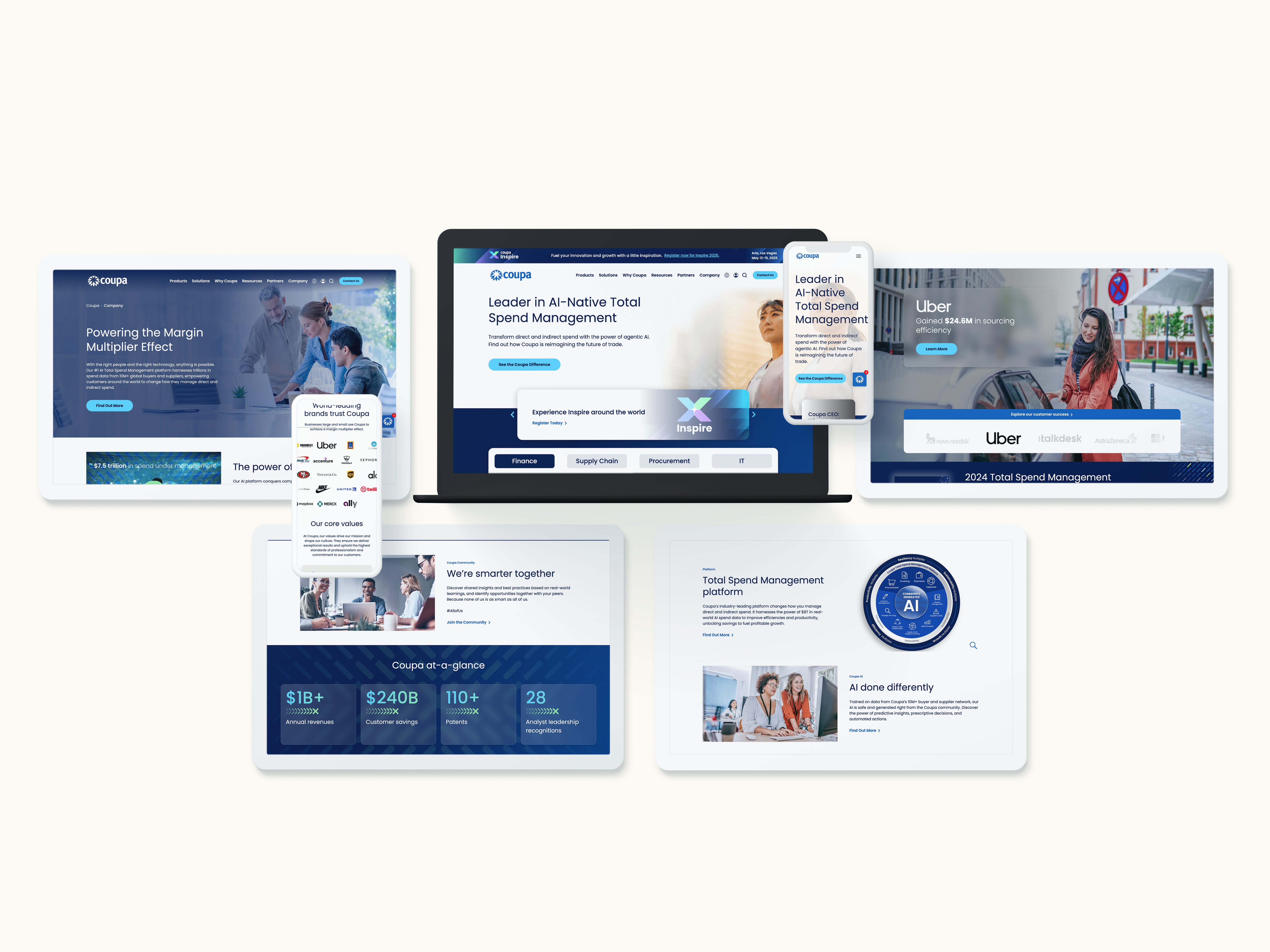
What B2B Marketers Should Be Doing Now
With the sunset of cookies no longer hypothetical, proactive planning is essential. Here are the immediate steps B2B teams should take:
- Audit your current martech stack to understand where third-party cookies are being used (from ad targeting to analytics).
- Enhance your first-party data strategy by refining lead capture forms, improving CRM hygiene, and investing in customer data platforms (CDPs).
- Test contextual and native campaigns now to build experience with post-cookie tactics.
- Explore identity solutions with your media partners and vendors to determine what options make sense for your business.
- Revisit attribution models and prepare to rely more heavily on direct engagement metrics and source-based lead reporting.
The End of Cookies Is the Start of Better Marketing
The transition away from third-party cookies is less a threat and more an opportunity—an opportunity to build deeper relationships, center strategy around consent and value, and create more resilient marketing ecosystems.
For B2B marketers, this is the time to get ahead. Waiting until third-party cookies are fully deprecated means playing catch-up in a game already in motion. The brands that win in this next phase won’t be the ones that cling to old tactics—they’ll be the ones that adapt, test, and evolve.

Need Help Navigating the Post-Cookie Future?
Bluetext helps B2B brands build smarter, privacy-first targeting strategies—from first-party data activation to media planning and messaging. If you’re ready to rethink your digital campaigns for the cookieless future, let’s talk.
For years, headless CMS platforms have been the go-to solution for brands seeking flexibility, speed, and scalability in their digital content delivery. By decoupling the front end from the back end, headless architecture empowered marketers and developers to create omnichannel experiences with greater efficiency. But as user expectations grow more sophisticated and digital ecosystems become more complex, even headless is starting to show its limits.
So what’s next? The future of content management isn’t just about removing the head—it’s about building a smarter, more adaptable brain. From composable digital experience platforms to AI-driven personalization engines, the next generation of CMS technology is poised to transform how organizations structure, deliver, and optimize content.
Here’s what’s on the horizon.
Composable Architecture: Breaking Down the Monolith for Good
If headless CMS decoupled the front end from the back end, composable architecture takes things a step further—decoupling everything. A composable digital experience platform (DXP) allows organizations to assemble a custom stack of best-of-breed tools for CMS, e-commerce, personalization, analytics, and more, all connected via APIs.
The result? Greater agility. Marketers and IT teams are no longer boxed into rigid, one-size-fits-all platforms. Instead, they can mix and match services that best support their goals—whether that’s fast localization, dynamic pricing, or seamless omnichannel orchestration. Composable architecture also allows for incremental upgrades, so brands can evolve their digital presence without overhauling entire systems.

AI-Powered Content Delivery Is Here—and Growing Fast
AI is no longer a buzzword in CMS. It’s becoming the engine behind smarter content experiences. From predicting what content a user will find most valuable, to dynamically adjusting layouts based on behavior, AI is changing the way brands think about digital engagement.
Modern CMS platforms are beginning to integrate AI-driven features like:
- Content recommendations based on user behavior and intent
- Automated tagging and metadata generation for better asset management
- Real-time personalization, delivering tailored content to the right audience at the right time
By embedding AI into the content supply chain, brands can move beyond static publishing toward experiences that are predictive, personalized, and performance-driven.

Content Operations Are Getting an Overhaul
The CMS of the future doesn’t just manage content—it powers an entire ecosystem of digital operations. That means tighter integration with Digital Asset Management (DAM) platforms, Customer Data Platforms (CDPs), and marketing automation tools.
Content teams are shifting away from traditional editorial calendars and rigid workflows. Instead, they’re embracing:
- Structured content models that support reusability across channels
- Data-informed content strategies based on performance insights
- Collaborative environments where marketers, designers, and developers work in sync
This new model of Content Ops is about more than publishing—it’s about treating content as a living asset that evolves and adapts to user needs.
API-First, Cloud-Native Platforms Are the New Standard
As organizations grow more complex and global, performance and scalability are critical. That’s where API-first, cloud-native CMS solutions come in. Built for integration and extensibility, these platforms allow developers to plug into virtually any system—without being locked into a vendor’s proprietary tools or workflows.
Benefits of API-first CMS platforms include:
- Faster development and deployment cycles
- Seamless integration with existing martech and eCommerce platforms
- Improved security, scalability, and reliability through modern cloud infrastructure
For enterprise brands navigating multi-site, multilingual, or multi-channel challenges, API-first CMS solutions offer the flexibility to deliver consistent, high-performance experiences across the board.

So, What Should Brands Do Now?
If your organization is currently running a traditional CMS—or even a headless one—it’s time to look ahead. The CMS landscape is evolving rapidly, and the platforms of tomorrow will be defined by their intelligence, adaptability, and interoperability.
Key considerations as you plan for the future:
- Audit your current content ecosystem: What tools are in place, and where are the bottlenecks?
- Invest in modular, composable architecture: Future-proof your stack by prioritizing flexibility and integration.
- Explore AI capabilities: Start with features like smart recommendations or auto-tagging, and scale up as you see results.
- Think beyond websites: Your CMS should support a unified experience across mobile, social, voice, and more.
At Bluetext, we help organizations reimagine their digital infrastructure to support not just where they are—but where they’re going.
Ready to evolve your CMS strategy?
Contact Bluetext to architect a future-ready content platform that’s intelligent, scalable, and built to grow with your brand.
B2B websites are content powerhouses. Whether you’re navigating technical product documentation, compliance resources, white papers, or thought leadership blogs, these sites are often packed with deeply layered and jargon-heavy material. But no matter how rich your content is, it’s only valuable if users can find it. That’s where smart search functionality becomes essential.
In today’s digital landscape, B2B brands must move beyond basic keyword search to deliver an intuitive, efficient, and tailored experience that unlocks the full potential of their content. In this post, we’ll explore what smart search means for complex B2B websites and how you can use it to enhance discoverability, user experience, and business outcomes.
The Challenge of B2B Content Complexity
B2B websites tend to grow organically over time. As new products, services, use cases, and regulations emerge, pages are added—often in silos. This creates sprawling ecosystems of technical data, fragmented resources, and inconsistent metadata. For users, it can feel like searching for a needle in a haystack.
Traditional navigation tools, including outdated search bars or simplistic site maps, often fall short in helping visitors find what they need. Whether it’s a government RFP looking for product certifications or a hospital IT team seeking integration specs, your users expect fast, accurate answers. When they don’t get them, they leave.
What Is Smart Search?
Smart search—also known as advanced site search—goes far beyond the basic keyword match. It leverages technologies like artificial intelligence (AI), natural language processing (NLP), and machine learning to understand user intent and deliver relevant results.
Key capabilities of smart search include:
- Predictive search suggestions
- Typo tolerance and fuzzy matching
- Semantic understanding of queries
- Filters and faceted navigation
- Personalized results based on behavior or user roles
- Analytics dashboards to track search behavior
Popular platforms like Elasticsearch, Algolia, and Azure Cognitive Search offer these features out of the box, and many integrate seamlessly with content management systems (CMS), customer relationship management (CRM) platforms, and digital asset management (DAM) tools.
Why Smart Search Matters for B2B Sites
A smart search function does more than improve user experience—it adds measurable business value.
1. Increases Content Discoverability
Smart search enables users to easily surface relevant product pages, PDFs, datasheets, blog posts, and more—regardless of how deep they’re buried.
2. Boosts Engagement and Conversions
The faster users find what they’re looking for, the more likely they are to take action—whether that’s submitting a lead form, starting a trial, or contacting sales.
3. Provides Insight into User Needs
Site search data reveals what visitors are trying to find. This intel can drive content strategy, identify gaps, and inform UX decisions.
4. Supports Role-Based Customization
By understanding who the user is (e.g., buyer, engineer, compliance officer), smart search can tailor results to deliver the most relevant answers for each audience segment.
Key Features to Include in Your Smart Search Implementation
To maximize the impact of your search functionality, prioritize features that enhance usability and scale with your content ecosystem:
- Auto-complete and dynamic suggestions
- Faceted search filters (e.g., by product type, industry, resource type)
- Support for long-tail and natural language queries
- Contextual search snippets that preview content
- Synonym recognition and custom dictionaries
- Integration with structured metadata and tagging systems
Don’t forget to optimize for mobile—B2B users increasingly access websites from smartphones and tablets, especially in the field.
Implementation Tips for Complex Sites
Building smart search into a complex B2B website requires careful planning:
- Audit your existing content to ensure it’s structured, tagged, and organized for machine readability
- Map common user journeys to understand how different personas navigate the site
- Define your taxonomy and metadata strategy to ensure consistent tagging and filtering
- Monitor and refine search performance using analytics and feedback loops
- Collaborate across departments (marketing, IT, sales) to align on priorities and content visibility
Smart Search in Action: A Real-World Snapshot
Imagine a defense technology firm with a site housing hundreds of technical briefs, compliance documents, and product brochures. With basic keyword search, users must already know the exact title or term to find a document. But with smart search, a procurement officer typing “NIST certification for satellite hardware” can instantly access relevant materials—even if the original file is titled differently. Filters allow narrowing by document type, date, or business unit, ensuring a streamlined path to the right asset.
Turn Your Website into a Smart Content Hub
If your B2B site is packed with valuable content that users can’t easily find, it’s time to upgrade your search experience. At Bluetext, we help organizations architect advanced search solutions that integrate seamlessly into complex digital ecosystems—enhancing usability, supporting business goals, and delivering measurable ROI.
Let’s talk about how Bluetext can help you implement smart search for your site. Contact us today.